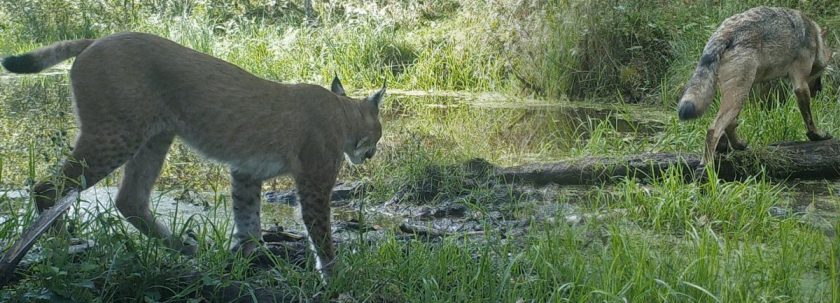Concerning competition between wolves and lynxes in Belarus, it is worthwhile to compare the situation in the local wolf population in Naliboki Forest in 2008-2012 (when there were half as many lynxes as there are now) and in 2015-2017 (when there were about 50 and even more lynxes). Both wolves and lynxes were more or less protected in Naliboki Forest in the 2000s.

In particular, I compared the wolf number, portion of pups in the local wolf population in November-December (when pups are still recognisable), patterns of pack forming in October-January (parents with pups or subordinating, i.e. a strong wolf has subordinated other wolves that ranged around).
In 2008-2012 in Naliboki Forest and its forest-agriculture surroundings in the area about 2700 km2, there were 51-70 wolves in early winter. The portion of pups of the year (0+) was 25-44% and 86% packs were of family-origin (perhaps, some of such packs included a few non-relative subordinated individuals).
In 2015-2017 in Naliboki Forest and its forest-agriculture surroundings, there were 40-44 wolves in early winter. The portion of pups of the year (0+) was 14-18% and the majority of the packs (at least, 63%) were entirely or mainly of non-family origin, i.e. mainly consisted of non-relative subordinated individuals.
Thus, in 2008-2012 the local wolf population in Naliboki Forest existed being supported by its reproduction, while nowadays in 2015-2017 it still exists due to the immigration of adult wolves during mating season.
Why do the changes happen? Lynxes hunt for weakened wolves such as pups and heavily pregnant females. Thus, when lynx population reaches markedly greater number, the reproduction in wolves almost stops. We have already got enough proofs to say that.
